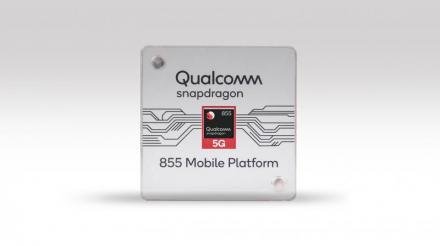At the annual Snapdragon Technology Summit, which took place on December 4-6 in Hawaii, global chipset manufacturer Qualcomm Technologies Inc., a subsidiary of Qualcomm Incorporated, unveiled the newest generation in the 8 Mobile Platform Series, the dual frequency Qualcomm® Snapdragon™ 855 Mobile Platform.
The latest offering from Qualcomm Technologies is the world’s first commercial mobile platform supporting multi-gigabit 5G, industry-leading AI and immersive extended reality (XR) collectively, ushering in a new decade of revolutionary mobile devices.
is the world’s first commercial mobile platform supporting multi-gigabit 5G, industry-leading AI and immersive extended reality (XR) collectively, ushering in a new decade of revolutionary mobile devices.
The Snapdragon 855 Mobile Platform supports dual-frequency GNSS, leveraging the Galileo E1/E5a signals as well as the GPS and QZSS L1/L5 signals to produce a more accurate and robust location in dense urban canyons where GNSS signals tend to be blocked or reflected.
Using new chip architectures built on leading 7nm process technology, the Snapdragon 855 Mobile Platform will also offer users long-lasting battery life and superior experiences in areas such as imaging, audio, gaming and XR.
Major milestone
“This announcement follows the trend of implementing dual frequency in consumer platforms to achieve new levels of location performance,” said European GNSS Agency (GSA) Executive Director Carlo des Dorides. “Combining high accuracy of location with 5G connectivity is a major milestone and we are proud that Galileo and its E1/E5 signals are part of this revolution.”
“Accurate and reliable position location is of utmost importance to the mobile experience,” said Alex Katouzian, Senior Vice President, General Manager, Mobile, Qualcomm Technologies, Inc. “Qualcomm Technologies continues to help improve consumers’ experiences with location-based services by adding dual-frequency GNSS support to the Snapdragon 855 Mobile Platform.”
Galileo use
Working closely with the GSA for what concerns the Galileo use in the chipsets, Qualcomm Technologies is active in Location Based Services for smartphones, wearables, computing, IoT and the automotive market segments. In 2016, the company made headlines when it launched the Galileo-enabled Snapdragon smartphone chipset, which was used in the BQ Aquaris X5 – the market’s first Galileo smartphone.
Earlier this year, Qualcomm Technologies also introduced a number of European GNSS (Galileo and EGNOS) capable automotive chipsets for Europe’s eCall system, the emergency response location initiative now mandatory in all new vehicle types sold in Europe. With most of its chipsets capable of receiving and using Galileo signals, Qualcomm is the world’s largest chipset manufacturer of Galileo-enabled receivers.
Media note: This feature can be republished without charge provided the European GNSS Agency (GSA) is acknowledged as the source at the top or the bottom of the story. You must request permission before you use any of the photographs on the site. If you republish, we would be grateful if you could link back to the GSA website (http://www.gsa.europa.eu).